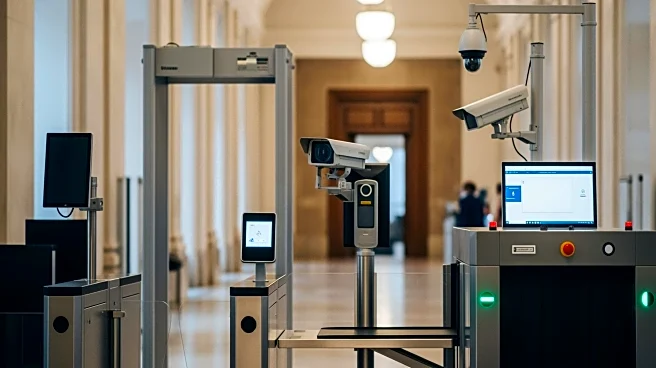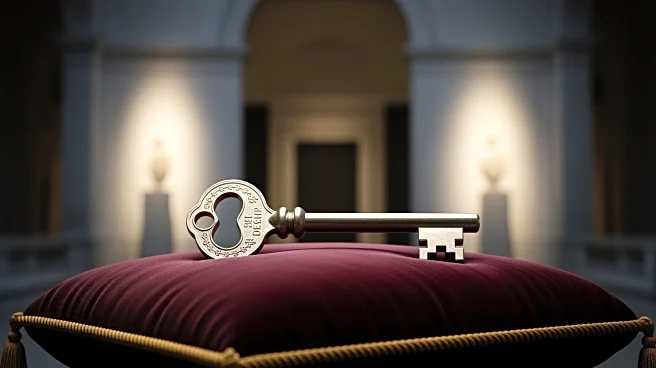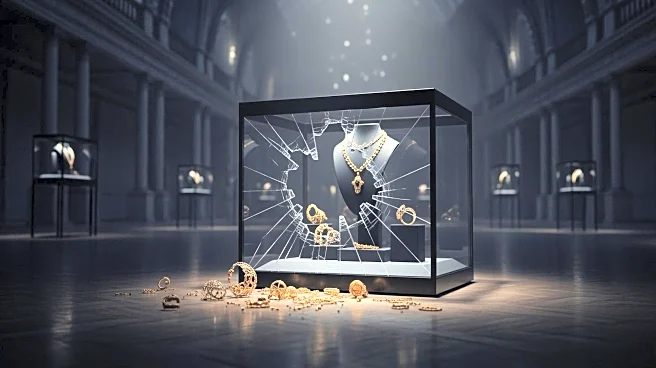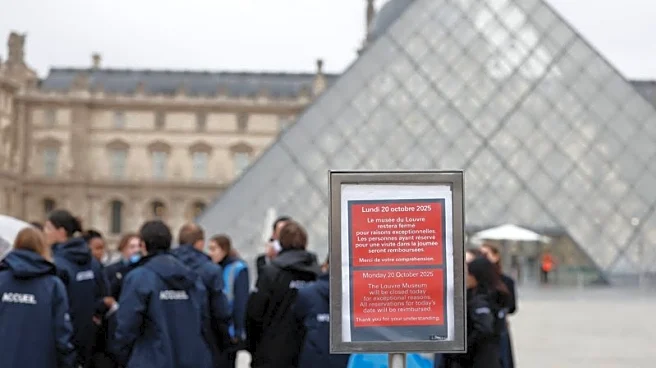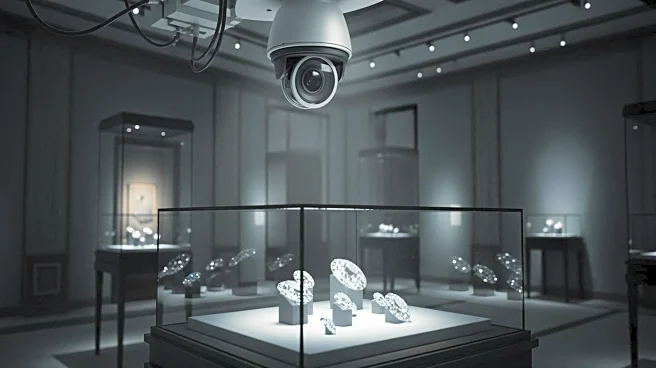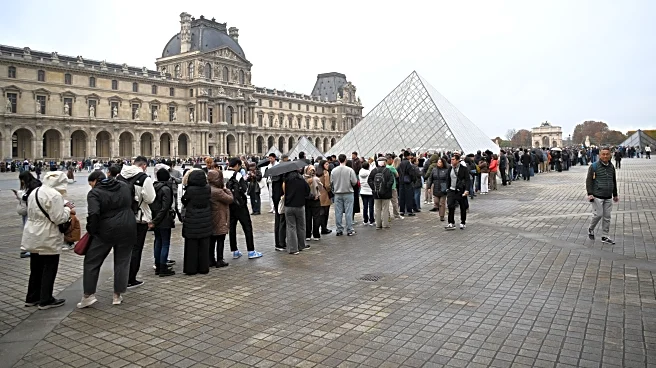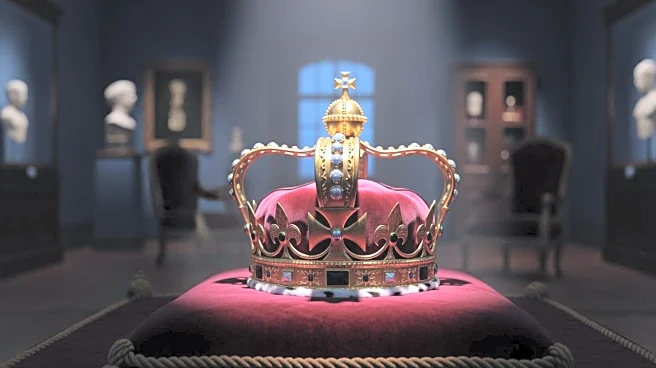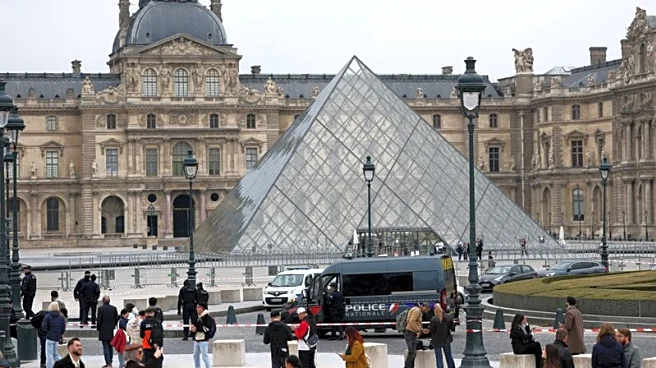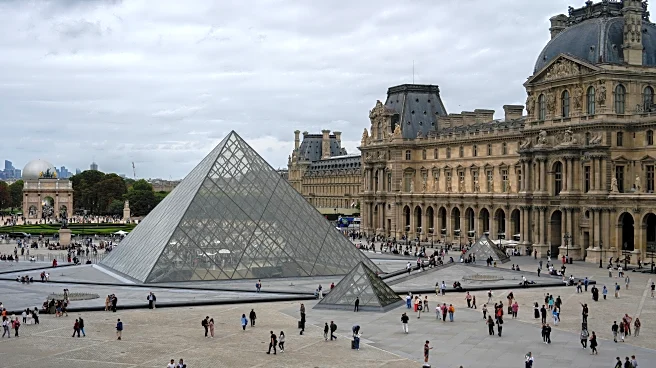What's Happening?
In a swift and audacious heist, thieves stole eight items of priceless jewelry from the Louvre Museum in Paris. The robbery took place in the Apollo Gallery, home to the French crown jewels, and lasted
only four minutes. The thieves used power tools to enter the gallery and made their escape on motorbikes. Among the stolen items was a crown belonging to Empress Eugénie, which was later recovered nearby. The Louvre, known for housing the Mona Lisa, closed its doors for the day due to the incident. The theft has prompted a review of security measures at the museum, as forensic experts gather evidence and authorities examine CCTV footage.
Why It's Important?
The theft of these historically significant jewels underscores the vulnerabilities in museum security systems, particularly in high-profile institutions like the Louvre. The stolen items, while having immense cultural value, can be dismantled and sold, posing challenges for recovery efforts. This incident highlights the increasing boldness of criminal gangs targeting cultural institutions, necessitating a reevaluation of security protocols. The heist not only impacts the Louvre's reputation but also threatens the preservation of France's cultural heritage, prompting discussions on the protection of valuable artifacts.
What's Next?
The Louvre Museum will remain closed temporarily as authorities conduct a thorough investigation. Security measures across French museums are likely to be reassessed to prevent future incidents. The French government may seek international cooperation to recover the stolen items and prevent their sale on the black market. The incident could lead to stricter security protocols and increased vigilance in protecting cultural heritage.
Beyond the Headlines
The heist raises ethical concerns about the commodification of cultural heritage and the responsibilities of museums in safeguarding historical artifacts. It also highlights the need for advanced security technologies and international collaboration to combat art theft. The incident may lead to long-term shifts in museum security policies and increased public awareness about the importance of preserving cultural heritage.
